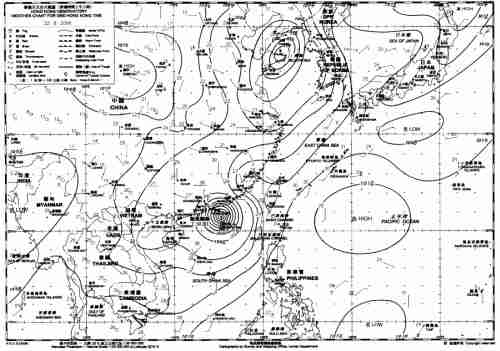Extra-tropical Cyclone vs Tropical Cyclone
Extra-tropical Cyclone vs Tropical Cyclone
CHAN Chik-cheung
We always talk about tropical cyclones. As you are probably aware, there are other kinds of cyclones, one of the most common being extra-tropical cyclones. What are extra-tropical cyclones? How are they different from tropical cyclones?
An extra-tropical cyclone is a low pressure system that primarily gets its energy from the temperature difference in the horizontal direction across the cyclone (known as temperature gradient in meteorology) . Extra-tropical cyclones have frontal features, i.e. they are associated with cold fronts, warm fronts, and occluded fronts. Structurally, extra-tropical cyclones are "cold-core". "Cold-core" means that the center is colder than the surroundings at the same height in the troposphere. Extra-tropical cyclones or their associated fronts may affect Hong Kong in the cool season (Figure 1).

Figure 1. A cold front affected south China on 30 March 2008
Tropical cyclones, in contrast, typically have little or no significant temperature differences across the storm. Their energy are derived from the release of heat due to cloud/rain formation from the warm moist air of the tropics. Structurally, tropical cyclones are "warm-core". Tropical cyclones usually affect Hong Kong during the hot months (Figure 2).

Figure 2. Typhoon Nuri affected Hong Kong on 22 August 2008
Often, a tropical cyclone will transform into an extra-tropical cyclone as it recurves poleward. Once in a while, an extra-tropical cyclone may lose its frontal features, develop convection near the centre of the cyclone and turn into a tropical cyclone.